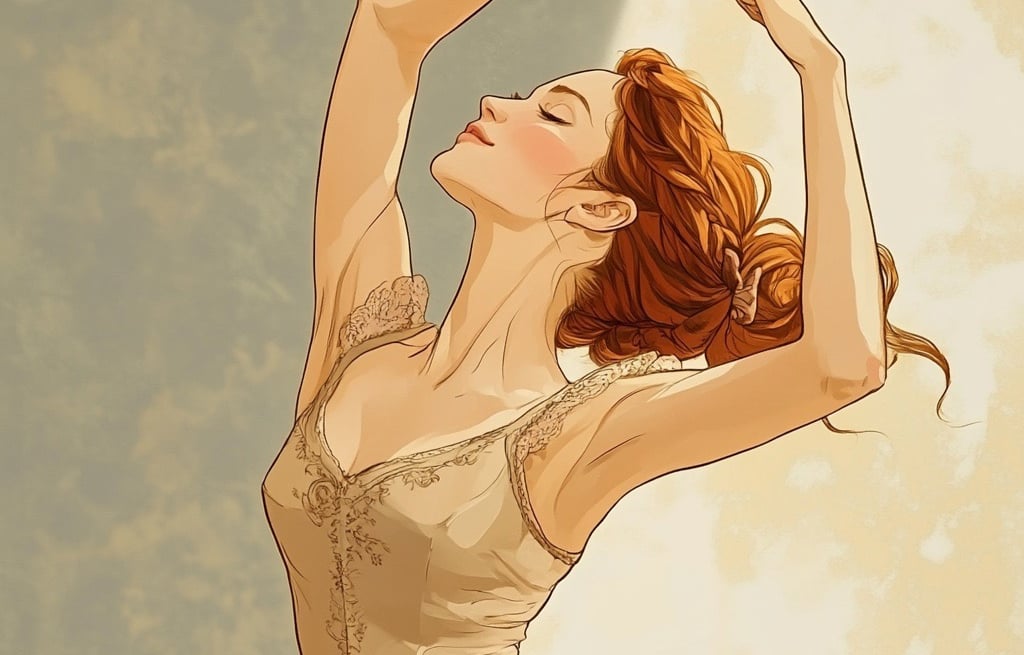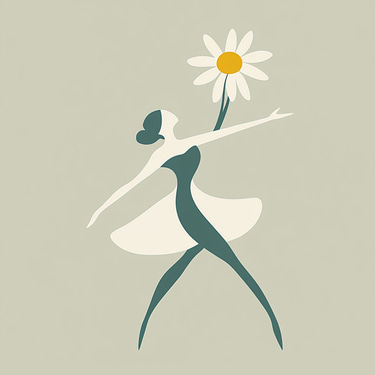Improving Coordination in Ballet: Head, Shoulders, and Arms
Coordination of the head, shoulders and arms is vital for achieving fluidity and elegance in ballet movements. Mastering how to execute quick directional changes is also essential. Here are the tips.
BALLET 101
Mrs. DL
10/28/20243 min read


Understanding the Importance of Coordination in Ballet
Coordination in ballet is crucial for achieving gracefulness and fluidity in movement. Among the various elements that dancers must master, the coordination of the head, shoulders, and arms plays a pivotal role. Each of these body parts contributes to the dancer's overall poise, presence, and ability to execute complex movements effortlessly. Not only does good coordination enhance the aesthetic quality of ballet, but it also aids in executing directional changes efficiently. Additionally, dancers must often execute quick directional changes, making spatial memory and direction coordination essential.
Here’s a structured approach to improve coordination of head, shoulders, and arms as well as to manage and remember directional changes effectively.
Part 1: Coordination Techniques for Head, Shoulders, and Arms
1. Master Basic Positioning and Orientation
- Foundation Positioning Practice: Familiarize yourself with basic positioning of the head, shoulders, and arms in ballet, such as the head’s inclination, the stability of the shoulders, and the graceful curve of the arms. For example, in an arabesque, the head slightly tilts toward the arm direction, shoulders stay aligned, and arms extend gracefully.
- Head Orientation Exercises: Practice head orientation in foundational movements. In turns or arabesques, head positioning can enhance the feeling of extension and expressiveness in movement.
2. Separate Arm and Shoulder Coordination
- Shoulder-Arm Isolation Practice: Practice separating shoulder stability from arm movements. For instance, while “opening the arms,” focus on lowering the shoulders and lifting the arms gradually. Practicing in front of a mirror ensures the shoulders remain steady without lifting excessively.
- Smooth Transition Practice: Work on the fluid connection between arms and shoulders. When transitioning from fourth to fifth position, keep shoulders stable while gracefully moving the arms, creating seamless movement flow.
3. Combined Coordination of Head, Shoulders, and Arms
- Step-by-Step Combination Practice: Choose a movement like a waltz step and first practice the head direction, then shoulder stability, and finally add arm motion. Gradually increase speed while coordinating all three aspects together.
- Increase Complexity Gradually: Start with simple directional exercises (e.g., facing the audience while opening arms) and move to more complex combinations (e.g., arabesque to the side), ensuring each part of the body aligns correctly before integrating.
4. Follow Musical Rhythm for Flow
- Head, shoulder, and arm movements in ballet often correlate with musical rhythm. In fast-paced music, head movements may be quicker and more defined, while in slower music, the head, shoulders, and arms should move with a softer and more sustained quality.
Part 2: Directional Change Coordination and Memory
1. Spatial Awareness Exercises
- Use Mirrors and Spatial Markers: Use mirrors or classroom markers to establish spatial awareness (front, back, left, right). Practice set movements facing different directions, such as an arabesque or pirouette, to build a solid sense of orientation.
- Ground Marker Training: Place markers on the floor to serve as directional cues. Move to each marked point while performing a specific movement, using markers to solidify memory of directional changes.
2. Break Down Directional Movements
- Segment Turning Movements: For directional combinations, break down each movement involving turns. For instance, during a waltz with a 45-degree turn, segment the movement into the initial step, turn, and final angle adjustment.
- End-of-Movement Self-Check: At the end of each movement, ask yourself, “What’s the next direction?” This self-check reinforces direction awareness.
3. Build Muscle Memory
- Practice Directional Repetition: For each directional change, reinforce with repeated practice. For instance, when performing a pirouette, practice consistently landing facing the next movement direction, creating muscle memory for smooth transitions.
- Rhythmic Directional Changes: Use music to cue directional shifts. In fast-paced music, for instance, perform a turn or directional change on each beat, using rhythm to maintain movement stability and direction.
4. Use Mnemonic Phrases for Directional Changes
- For complex directional combinations, create short mnemonic phrases, such as “front-side-turn-close” to represent moving forward, opening to the side, turning, and closing. Mentally rehearsing these phrases reinforces memory and helps keep track of directional changes in complex sequences.
Ultimately, enhancing the coordination of the head, shoulders, and arms is an ongoing journey for ballet dancers. By dedicating time to practice, utilizing mirrors for feedback, and mastering directional changes, dancers can cultivate a harmonious relationship between these body parts. This not only improves their technical ability but also elevates their overall performance quality, allowing them to express the beauty of ballet more profoundly.
DancingLoving - your non profit association for holistic wellbeing
mrs.dancingloving / Mrs. DL


Spotify: community music & podcast sharing
WhatsApp: open community
Instagram: mrs.dancingloving
LinkedIn & Facebook: stay tuned!
Newsletter: sign in in "contact"
